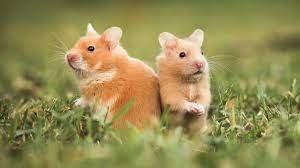Introduction
People love to have a cute pet in their home and the best example of adorable little pets is hamsters which are not so dangerous to have and are a little cheaper than other animals. But before buying any animals it is very important to know about their lifespan so that you will be aware of how long you need to take care of them.
So you might be wondering about the lifespan of the hamsters, so we will discuss this further in this article.
How long do hamsters live?

There are different species of hamsters and their lifespan is almost consistent. It’s just that the ones living in captivity have a longer lifespan than the ones living in the wild. Commonly the hamsters living in captivity have a lifespan of about 2-4 years on average. Then the size of the hamsters also depends on their life expectancy. The smaller species live less than the bigger ones. The one living in an internal environment greatly depends on the care they are getting and on their health too. There are many other factors too which depend on their lifespan terms. Some of these factors which depend on their more day of lifespan are:
-
Nutrition and diet
Hamster’s food resources are also a major factor in their life expectancy as if they eat a healthy diet they can live longer.
-
Availability of food
These factors mainly depend on hamsters living in the wild as sometimes they have to face the problem of no food resources and lack of food can lead to the death of wild hamsters.
-
Habitat
Hamsters have an active life which is good for their health but they also need to protect themselves from predators, especially those living in the wild.
-
Prevention from predators
Their lifespan also depends on this factor as they safeguard themselves from the other predators in the wild. But the ones living in captivity are all protected by their safe shelter and caretakers.
-
Care (for the captivity ones)
Hamsters need good care which automatically leads to a longer lifespan.
-
Genetics
Breed and genetics also depend on their life expectancy rate and their size also matters, the bigger ones tend to live longer than the shorter ones.
You might also be interested to know How Often Do I Clean Out My Hamsters Cage?
Well, the life expectancy also depends on different species of hamsters. The lifespan ranges from 1.5 – to 3.5 years.

-
Roborovski Hamster
These types of hamsters have a lifespan of about 3-3.5 years.
-
Winter white Russian dwarf hamster
These types of hamsters have a lifespan of about 1-2 years.
-
Campbell’s Dwarf hamster
These types of hamsters have a lifespan of about 2 years.
-
Syrian Hamster
These types of hamsters have a lifespan of about 2-2.5 years.
-
Chinese hamsters
These types of hamsters have a lifespan of about 1.5-2 years.
-
European hamsters
European hamsters tend to live longer up to 8 years.
-
Djungarian hamster
The life expectancy of this species of a master’s is about two years or a little bit more.
Hamsters living in captivity like Syrian hamsters can live up to 5-6 years on average if cared for nicely.
How can you give your hamsters a longer life?

Well, hamsters living in the wild have a lifespan lesser than those living in captivity. The caretakers need to be careful with everything to give their hamsters a long life. Here are some tips you can consider to give your hamsters a better and long life:
-
Give your hamster a safe and secure shelter
Hamsters generally have a cage in which they live, so the caregivers need to be aware of the quality of the cage as some cage has a wire bottom or sharp edges which might hurt your hamsters. It’s advisable to bring the plastic bottom of the cage which is nicely built without any sharp and pointing edges, and the cages should be smooth. This type of cage is pretty much good for them.
-
Clean your hamster’s cage regularly
Hamster’s cages should be clean in order to protect them from any kind of disease and illness. Remember, to change the beddings and the bedding materials should be good quality.
-
Provide them with healthy foods
Hamsters can become sick easily, therefore it’s important to give them a healthy diet so that they remain healthy and fit and live longer. You can provide anything to them from a variety of fruits and vegetables to nuts and grains.
-
Make them exercise regularly
Hamsters do need exercise regularly, especially the young ones. So running a wheel is one amazing option for exercising. As hamsters in the wild always have to run to protect themselves from every danger in the wild, they built an amazing reflex. This thing they gave to do to start living for longer years.
Wild hamsters Vs Hamsters in captivity

Hamsters living in the wild have a very challenging life as they have to face everyday struggles searching for food, and climate change, and even they have to protect themselves from outside predators. But these hamsters are so small they cannot safeguard themselves for a longer time. This leads to a shortened life expectancy of wild hamsters in comparison with those living in an internal environment, safely in a shelter with a caretaker to look after them. The hamsters living in captivity are available with healthy foods and resources, better medical care and vet, and with a healthy and peaceful lifestyle. Hence they tend to live longer than wild hamsters.
Conclusion
These hamsters need to be taken care of nicely as they can be affected by anything and become ill. So the ones living in captivity live longer than the ones living in the wild. So if you want to keep your hamsters alive long then follow these steps to give them a peaceful and healthy life.
- Proper care
- Good diet
- Enough exercise
- Regular vet visits
Wild hamsters have to fight to be alive and live longer but those in captivity are the luckiest.





